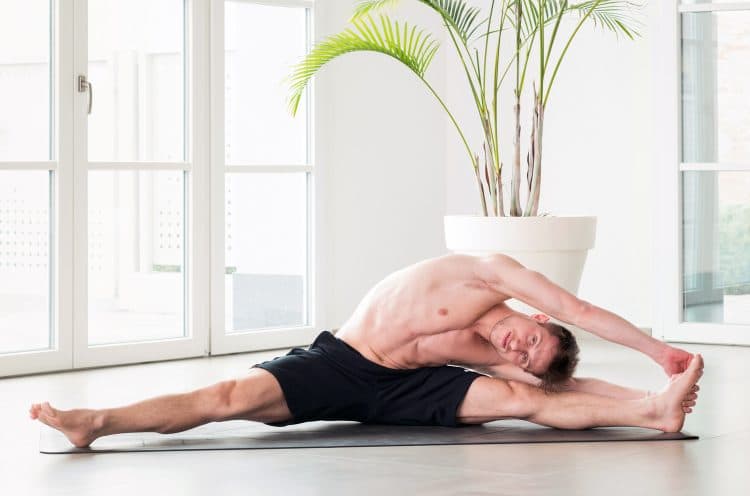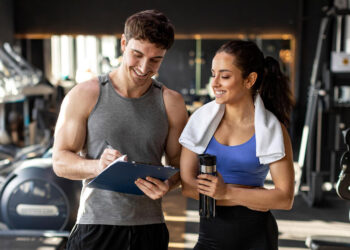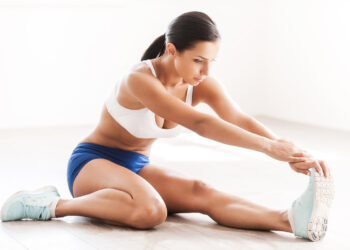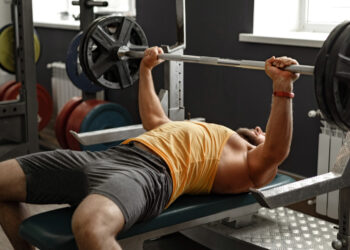When we think of mobility we often think about flexibility and possibly bodyweight style training. To be mobile is to be fluid and flexible, we bemuse.
But what if mobility could mean more muscle? What about more strength?
Aside from the obvious reasons of healthier joints and longevity regarding walking, hiking, and climbing, mobility can potentially translate into faster gains and, subsequently, a better looking physique.
Yes, more flexibility is a wonderful thing, but there’s much more to it than simply touching your toes. Let’s look at a few things that mobility can do for you and then see how it can be applied to give you its full advantage.
What is mobility training?
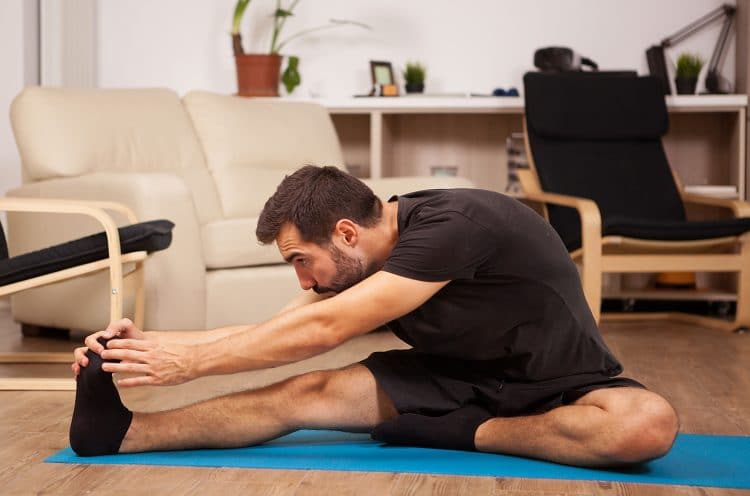
Many will mix the terms flexibility and mobility together. They feel they are interchangeable, however, there is a difference. Flexibility is the range of motion a joint has in reference to its direction of movement. For example, if you have flexible hamstrings you could possibly place your hands flat on the ground bending over at the waist.
Level Up Your Fitness: Join our 💪 strong community in Fitness Volt Newsletter. Get daily inspiration, expert-backed workouts, nutrition tips, the latest in strength sports, and the support you need to reach your goals. Subscribe for free!
Mobility, on the other hand, is your ability to move your limbs around the joint with an increased range of motion. In other words, it’s roughly your ability to actively move in a specific range of motion. You may be able to touch the floor with your palms but do you have active control of that flexibility? An example may be your ability to perform a deep Romanian deadlift under control and with applied strength.
Mobility training helps to increase flexibility by actively and intentionally mobilizing the joint for greater range of motion. It also accomplishes this by keeping the range of motion strong as to avoid unnecessary injury or detrimental stress.
Why you need mobility training
The question of whether you need mobility training or not should be a no-brainer, but it does bear explanation.
- Mobility training will instill a flexibility program into your regular training program.
- Mobility training will allow you a greater intentional motion with added strength.
- Mobility training will allow more muscle fibers to be activated due to greater range of motion.
- Mobility training will prevent you from using heavier than needed loads for hypertrophy.
- Mobility training will ultimately help build resilient joints for long-term health and success.
When to do mobility training
There are two main times to perform mobility training. One being before your training begins (but after a general warm-up) and the other being on a separate day from training with a warm-up preceding a mobility session.
Mobility training acts as a form of dynamic warm-up to do prior to your training session. Not only will it act as a more specific warm-up, it will also act to mobilize specific areas for the work ahead. For example, specific mobility moves can be performed to ready your hip joints for a lower body session. This will increase the range of motion and shove blood into the area.
All said, a typical schedule of preparedness will look like this:
- General warm-up: bike, light jog, jumping jacks, or anything that gets your core temperature and heart rate up for five to 10 minutes.
- Mobility work: mainly focusing on shoulder and hip range of motion and activation.
- Specific warm-up: performing several light sets of a specific exercise to be performed.
One you’ve been through all three phases, you’ll be more than ready to hit the weights.
Problem areas
As mentioned, the two main “problem areas” or areas of focus are the shoulder and hip joints. Now, this isn’t to say other areas are any less important, it just means that many lifters can do better in these two specific areas.
Tight traps, deltoids, chest, and even biceps can contribute to a shortened and/or uncomfortable range of motion for the shoulder joint. This, in turn, will eventually cause pain and potential injury.
The same can be said for the hip joint. With tight hamstrings, glutes, and lumbar, the hips can become rigid and resistant to a full range of motion resulting from a lack of mobility training and can cause a significant difference in squat depth, back strain, and less overall mobility for other exercises.
Precautions
So, let’s finally get to the exercises. But before we do, we’ll need to set some ground rules for form, function, and execution.
- Perform each exercise with intention and control. You are attempting to activate the muscle through its full range of motion. You’ll want to avoid haphazardly swinging loosely.
- Increase the range of motion slightly with each rep. This should be done to very mild discomfort.
- Increase the speed slightly with every few reps while maintaining complete control. Avoid this if you are new to this type of training.
Now let’s look at a few examples of overall lower and upper body mobility and how they’re done.
Lower body focus
1. Static lunge
Kneel on one knee with your front foot on the floor and bent at a 90 degree angle. Your back leg should be stretched out behind you. With a straight back rock your body forward slightly feeling your hamstring in the front leg and the hip flexors in the rear stretch. Come back and rock forward for 10 reps.
This will activate your glutes, hamstrings, and adductors.
2. Walking lunge
Level Up Your Fitness: Join our 💪 strong community in Fitness Volt Newsletter. Get daily inspiration, expert-backed workouts, nutrition tips, the latest in strength sports, and the support you need to reach your goals. Subscribe for free!
Step forward with one foot and lunge just before your knee touches the floor. Over the course of your walk step a little longer in front of you mobilizing your glutes. Do 20 to 30 feet for three rounds.
This will activate your glutes, hamstrings, adductors, abductors, and quadriceps.
3. Calf climb
Stand facing a wall with your hands flat against the wall and your feet behind you so you feel a slight stretch in your calves. Rise up on your toes with one foot while the other stays flat. Alternate as if you were walking but without lifting your foot up. Keep alternating feet while feeling a slight stretch in each foot with each rep. Do 20 reps each leg.
This will activate and mobilize your calves.
4. Glute stretch
Sit on the floor with your legs out in front of you. Bend one leg at 90 degrees and place it flat-footed on the other side of the straight leg. Twist your upper body the opposite direction and pull your bent leg over the other leg. Pull then release for a count of five. Repeat with the opposite side.
This will mobilize your glutes and abductors.
5. Catchers sit
Widen your stance while standing a little beyond shoulder width. Kneel down between your knees while keeping them in line with your feet. You should be in a sitting position. Keep your back straight and place your elbows inside your knees while pushing your legs out slightly. Push out then release for 10 reps.
This will open up your hips and increase range of motion for your glutes.
6. Hamstring walk
Stand straight and step forward with a locked knee. With your opposite hand, bend down and attempt to touch your toe of the opposite foot that stepped forward. Step with the other foot and reverse the toe touch. Take twenty steps total.
This will mobilize your hamstrings, glutes, lats, and lumbar.
Upper body focus
1. Shoulder opener
Stand straight under a pull up bar or other upright stable structure. Raise your arm straight up so that your hand is rested on the bar. Walk forward a step as your hand will stay overhead and begin to stretch behind you. Hold that position for three seconds and release. Do five reps each side.
This will increase the mobility of your shoulder girdle overhead.
2. Cross body shoulder
Stand beside an upright post and grab the post with your opposite arm so it is across your front. Hold and twist your upper body so that the back of your shoulder is stretched. Relax your shoulders and lats. Do five reps each side.
This will activate and stretch your upper back and traps.
3. Lat pull
Stand in front of an upright stable poll. Grasp the poll with one hand around knee height. Bring your hips back and allow your bodyweight to pull you back. Relax your lats and arm while keeping a firm grasp with your hand. Hold for 10 to 20 seconds and repeat for the other side.
This will mobilize your back and shoulders.
4. Thoracic opener
Lie on the floor on your left side with your knees and hips bent at 90 degrees each. With your arms straight out in front of you, begin to rotate your upper body over to the opposite side leading with your arm while keeping your legs in contact with the floor. Stretch your arm out wide attempting to touch the floor behind you. Reverse sides and repeat. Hold each side for 30 seconds.
This will mobilize your spine and shoulders.
5. Dead hang
This isn’t so much a mobility exercise than it is an overall finishing stretch, but it bears mentioning. A dead hang is simply where you’ll grasp with both hands overhead and allow your body to hang straight down. The benefit here is to deload and decompress the spine.
It’s recommended you do this after every workout to give your poor battered spine a little relief. Hold the dead hang for 20 to 30 seconds. If you can go longer, work your way up to a solid minute.
In Closing
Mobility training doesn’t have to be some sort of foreign practice reserved for group fitness classes at your local gym. It has powerful and lasting effects on not only your flexibility, but also your longevity and ability to safely and confidently perform a fuller, stronger range of motion. Your training and your body will thank you for it.

